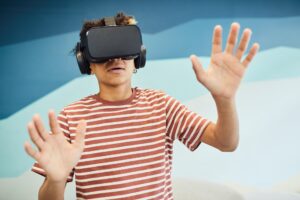The global computer software company, Adobe, has unveiled a new augmented reality shopping tool to make it simpler for online retailers to integrate AR features on their web stores.
The technology enables the customers to scan a product image on an eCommerce website using their smartphone, superimposing a 3D render of the product onto their living space. A couple of key features of the technology include its capabilities for true-to-life size precision and adding multiple products within the same view.
The tool is currently in the internal test stage, and there’s no clear information on a commercial release. Earlier this week, the company had unveiled the tech at the annual Adobe Summit. The innovation comes at the right time as AR shopping rapidly surges in popularity. The pandemic accelerated the development of virtual try-on and at-home product testing applications that eliminate the need to visit a physical store.
However, the brains behind the tool, Chang Xiao, a research scientist at Adobe, believes that the current offerings in the market provide only rough estimations of the size of a product. On the other hand, Adobe looks to encode dimensions information within the invisible marker code embedded in the photos. This would allow computer algorithms to translate the images into precise 3D projections.
Additionally, a key differentiator for the tool is its capability to process multiple projects within a single setting. It can also be done simultaneously for products across different websites powered by Adobe’s technology.
“For example, you want to buy a coffee maker, and you scan the coffee maker, and it will appear through your phone on your desk. Then you go to another website, this time to buy a coffee mug, and then you can add it to the same order – you don’t need to close the app or restart – and the coffee mug will also appear,” explained Xiao. “And then you can rearrange them in whatever order you want and view them in the same area. And you’ll get a sense of how these two products will be organized in the same view.”
The technology requires the retailers to embed a flickering marker into their product images. It is invisible to the human eye but can be detected by the computer vision built into Adobe’s mobile app. The company, however, is still experimenting with ways to notify users where the feature is available to try through a tiny logo or a text snippet somewhere on the website.
Follow us on LinkedIn
Read other Articles





